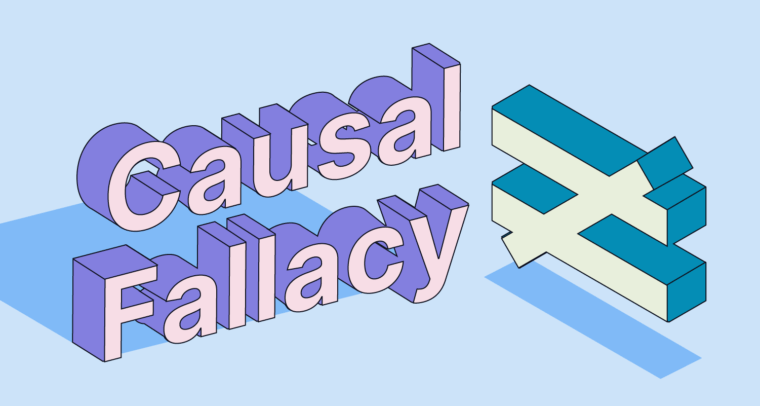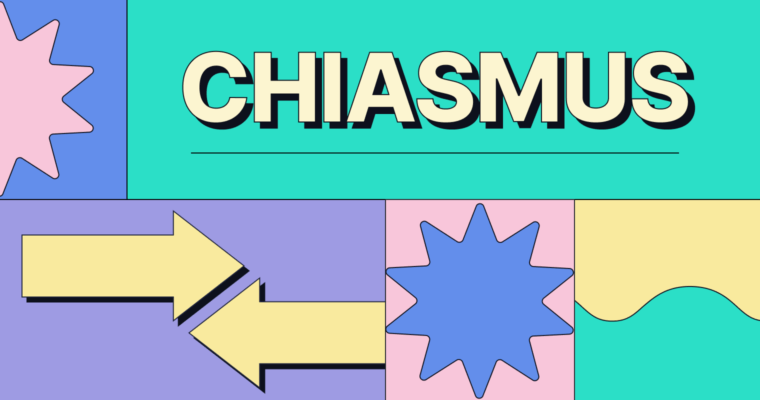
As humans, we naturally want answers to our questions. We want explanations for the situations we find ourselves facing, and we want to be able to understand why those situations worked out the way they did.
But there’s a snag: We aren’t always logical thinkers. And sometimes, in our drive to explain the world around us and the things that happen in that world, we blow past logic in favor of neat, satisfying conclusions. This thought process is called the causal fallacy, which is a type of logical fallacy.
What is the causal fallacy?
The causal fallacy is the logical fallacy of incorrectly making a conclusion about an event’s cause. The causal fallacy is actually a category of fallacies rather than one specific line of faulty reasoning. All of the fallacies that fit into this category are characterized by one thing: the illogical assumption that a specific factor caused a specific effect.
Take a look at these examples of the causal fallacy in action:
- Whenever I wear my lucky jersey, my team loses. So it must actually be my unlucky jersey!
- She shouldn’t have stopped for coffee on the way to work. If she hadn’t stopped, she wouldn’t have had a fender bender.
- Every time they see a rainbow in the sky, something good happens. So whenever something good happens, they know there must be a rainbow.
Logically, none of these can be true. Your outfit on game day has no bearing on your team’s success, and fender benders happen all the time, regardless of a stop for coffee. The fallacy here lies in assuming the relationship between an event and its supposed cause.
When a causal fallacy comes up in discussions, it can mislead listeners. When listeners recognize a causal fallacy, it can also make the speaker look uneducated on their topic or provoke suspicion of them. In other contexts, it can lead to misrepresentations, confusion, and mischaracterizations. What’s more, it can lead to people glossing over and ignoring an issue’s actual cause, which is often more complicated. Causal fallacies often happen in politics when politicians attempt to associate their opponents with negative things, even when this association isn’t accurate.
Causal fallacies in other areas can have similar effects, like blaming an individual for something they had little to do with or pushing people to do things they otherwise wouldn’t. When it’s used this way, the causal fallacy can have effects similar to the slippery slope fallacy.
What are the different types of causal fallacies?
There are a few different types of causal fallacies. While they all hinge on an incorrect view of the relationship between cause and effect, they each present this view uniquely.
Post hoc fallacy
The post hoc fallacy is the assumption that because one event happened after another, it happened because of that first event. Put into formulaic terms, the post hoc fallacy is “X followed Y, so Y must have caused X.”
Put into words, the post hoc fallacy might sound like:
- After I dropped off donations for the food bank, I picked up a lottery ticket at the corner store, and it was a winner. That must’ve been my reward for doing a good deed.
- Our state stopped observing Daylight Saving Time, and now it seems like more bugs are out. We shouldn’t have stopped observing Daylight Saving Time.
Mistaking correlation for causation
You’ve probably heard the phrase “correlation does not imply causation.” When somebody says this, they’re acknowledging this type of causal fallacy and consciously choosing to avoid it.
A correlation is a statistical relationship or connection between two things. When somebody says “correlation doesn’t imply causation,” they’re saying that just because two things appear to be related due to timing, it doesn’t mean either thing is actually influencing the other. A famous example of this is the correlation between shark attacks and ice-cream sales. Buying ice cream doesn’t make an individual more likely to be attacked by a shark, and being attacked by a shark doesn’t make them suddenly crave ice cream. The common denominator here is that both tend to increase in the summer—the shark attacks increase because more people are swimming in the ocean, and the ice-cream sales increase because it’s hot out.
When you notice a correlation and automatically assume there’s causation behind it, you’re making this logical fallacy.
Reverse causal direction
Reverse causal direction is similar to the post hoc fallacy in that it recognizes a sequence and then assumes causation was responsible for that sequence. The difference with the reverse causal direction fallacy is that the speaker assumes that one thing causes another without considering that the inverse might actually be true.
For example, one might state that children who play youth sports grow up to become fans of professional sports because their childhood experience primed them to enjoy sporting events as adults. The reality here might actually be that children who play youth sports play them because they enjoy sports, and they continue enjoying sports as adults.
Genetic fallacy
The genetic fallacy occurs when you assume that because two distinct things are independently associated with a third, those two distinct things are associated with each other. Here is an example:
- A new bookshop opened in town, but I’m not going to shop there because the last time we went to a bookshop, I was charged twice for my purchase.
The common factor here is a bookshop, but the new bookshop has nothing to do with the old one. Despite this, the speaker assumes that any place that sells books will overcharge them.
The genetic fallacy can have some overlaps with ad hominem and straw man fallacies. Take a look at how the same subject can be misrepresented through these three fallacies:
Genetic fallacy: Students have gotten injured during fraternity rushes, so in the interest of student safety, it only makes sense to ban fraternities from campus.
Straw man: Fraternities are just groups of partiers who act wild and cause problems, so they should be banned from campus.
Ad hominem: We should ban fraternities from campus because AJ and Dave, two fraternity members, are rude and always late to class.
Fallacy of the single cause
This causal fallacy occurs when a speaker or writer attributes an issue to a single cause instead of acknowledging that it could have many causes. For example, an individual might notice an increase in the number of animals being surrendered to their local shelter. They might assume it’s because their owners adopted them impulsively without understanding how much work goes into pet ownership. However, the reality might be that although some owners are surrendering their animals for this reason, others might be surrendering their animals because increasing expenses are forcing them to move or personal issues have made it impossible to keep their pets.
How to avoid using causal fallacies
Having causal fallacies—and really, any logical fallacies—in your writing can make it appear that you don’t have a strong grasp of your subject. Keep in mind that accidentally making an illogical argument doesn’t make you a bad writer; the best of us might make a red herring or bandwagon argument every now and then. However, knowing how to spot and revise logical fallacies is a big part of being a good writer.
Look for causal fallacies when you read through your first draft. This first round of editing is the stage where you primarily edit your content. As you read your work, take note of the claims you make and match them to your sources. If you find any claims that you can’t back up with primary sources or secondary sources, you might have causal fallacies in your writing. If the claims are paraphrases or direct quotes from your sources, check to see if you’re communicating them accurately in your work. If the claims are conclusions from your own analysis of the sources, make sure you have sufficient evidence in those sources to support your claim. Your original conclusion is your own, but in academic writing, you need to be able to demonstrate the path you took to reach that conclusion.
Causal fallacy examples
- Many older homes contain asbestos, and haunted houses are old. Asbestos must make the houses haunted.
- I was going to be a writer, but my cousin was a writer and ended up teaching. I don’t like teaching, so I decided not to become a writer.
- As soon as Rachel arrived, it started to storm here. Rachel must have brought the storm with her.
Causal fallacy FAQs
What is the causal fallacy?
The causal fallacy is the logical fallacy of incorrectly concluding the cause of an event. It comes in many different forms, but in each of these forms, the speaker makes an illogical association between an event and its supposed cause.
What are the different kinds of causal fallacies?
- Post hoc fallacy
- Confusing correlation for causation
- Reverse causal direction
- Genetic fallacy
- Fallacy of the single cause
What are some examples of causal fallacies?
- In October, people are more likely to wear costumes than at other times of the year. They’re also more likely to buy pumpkins. That must mean wearing costumes makes people crave pumpkins.
- My best friend loves skiing. I’ll probably love skiing too because we’re such good friends.






